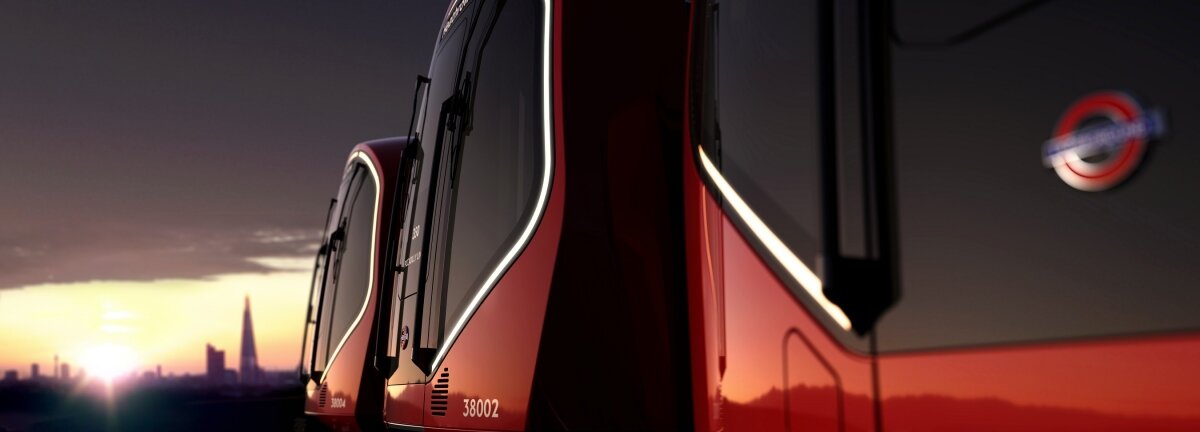Q&A: Paul Priestman on design and the future of manufacturing

Paul Priestman is co-founder of PriestmanGoode, a leading global design and brand experience consultancy that specialises in transport and aviation. He has built his reputation through award-winning future concepts and is an advocate of the importance of design to business and the need for long-term sustainable thinking. He has been voted as one of London’s 1,000 most influential people by the Evening Standard.
Paul will be speaking at this year’s Leading Business by Design Summit. We asked him a few questions about the future of design manufacturing, China’s impact on the industry and our Summit.
What does design bring to manufacturing?
Value, efficiency, sustainability and competitive advantage.
What impact has design had on the manufacturing industry in the last 10 years?
It's been a difficult period for the industry. I think the last ten years have seen designer makers and craft makers thrive more than manufacturing. That's largely as a result of the economic crisis and manufacturing moving away from the UK, whilst consumers simultaneously have wanted products that are handmade or made locally. But I think that's also a result of a lack of dialogue between designers and manufacturers as to how the two can mutually benefit each other. This is why the Leading Business by Design Summit is an important event.
What do you see in the future of design in manufacturing?
I think design needs to, and will increasingly become, part of the process from a much earlier stage. We've seen a real change in the industries we work in, which we have been instrumental in making happen. In transport, for instance, design was often seen as a styling tool and designers only brought on board quite late in the development process. But design is about much more than styling, it's about efficiency, maximising resources, improving sustainability, etc.
It takes a forward-thinking client to include design from the outset. We have been fortunate to work for many, including Virgin trains for whom we designed the Pendolino and Voyager trains, and more recently Transport for London, with whom we designed the new tube for London.
We need to encourage and support British manufacturers.
You’ve done a lot of work in China. British manufacturers and designers are facing increased competition from the region, what can they do to keep pace?
We need to encourage and support British manufacturers. At PriestmanGoode, we work with British suppliers wherever we can. For instance, we create models and lifesize mock-ups for all of our projects, and these are all done in the UK.
What part has design played in China’s growing reputation for innovation?
China's reputation started changing quite recently, particularly with the advent of events like Beijing Design Week and the Business of Design Conference. There's been a concerted effort by Chinese designers to try and change the reputation of the country from 'made in China' to 'designed in China'. But the industry is still relatively young there, and while there are many young designer makers and the craft industries are thriving, design is still in its infancy in terms of being part of the development process in large companies.
PriestmanGoode has been working with CSR Sifang, one of the world's largest rolling stock manufacturers, since 2008, and I became their Global Creative Director in 2013. They have been incredibly forward-thinking in embracing design at a time when large engineering companies didn't really consider this an important part of their process. They are now considered one of the most innovative rolling stock manufacturers in the world.
There is an emerging generation of innovators coming from the east – what can the UK do to ensure a similar crop from its schools?
The schools are not the problem. We have some of the best design schools in the world. The problem is at the moment we are training these incredibly creative young minds, but the way the current visa system works is that they are often not able to stay in the UK.
Previously, there was the post study work visa. This gave us the opportunity to offer work to young graduates, whose potential we could assess in the workplace before making a commitment and a judgement about whether they had exceptional skills to offer, which we could not find elsewhere.
Our design courses are producing outstanding designers. Some of the best people on these courses may be from other countries. Unless legislation changes, we run the risk of educating great innovators and sending them away, increasing other countries' competitive advantage and undermining our own.
We should be forging links between designers and industry. The summit is a great initiative to try and bridge that gap.
Why did you decide to get involved in this year’s Leading Business by Design Summit?
Design conferences often consist of designers speaking to an audience of designers, when we should be forging links between designers and industry. The Summit is a great initiative to try and bridge that gap.
What are you most looking forward to at this year’s Summit?
Forging relationships with people across different sectors.
You’ll be discussing future-proofing at the Summit – what can design bring to businesses to ensure a more sustainable cutting-edge?
Designers - particularly in the areas that I work in, transport, aviation and product - are trained to think in the long term. With transport, for instance, we're designing vehicles that will be in service for up to fifty years, so we have to think about developments in technology and create designs that are flexible, as well as consider changing demographics. Design is intrinsic to business success. It's not just a styling tool, it's about making things that are better to use, easier to maintain and more efficient to manufacture.
Paul will join an expert line-up of speakers to discuss design’s role in UK manufacturing at the Leading Business by Design Summit.
Subscribe to our newsletter
Want to keep up with the latest from the Design Council?
